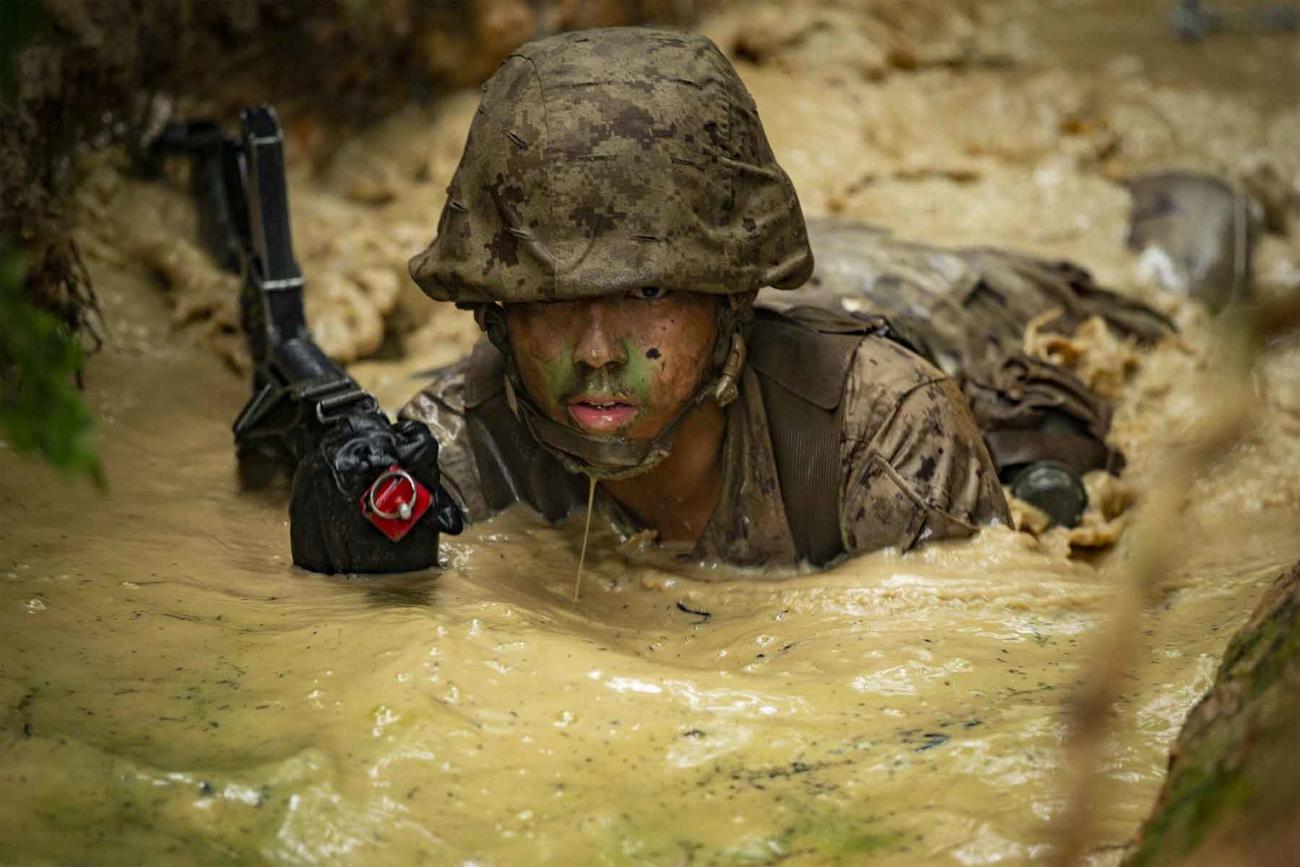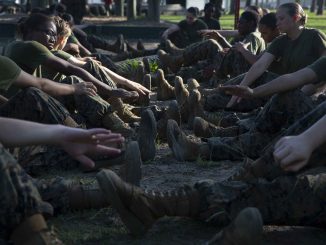

It’s a truism in the military that many field ailments can be cured with a pair of fresh socks. Now, the Marine Corps wants to improve warfighter health by putting an improved combat boot sock in their seabags — one that incorporates technological and fabric developments from the last two decades.
The service published a request for information this month, asking manufacturers to offer insights into how to make the current combat boot sock better and identify potential makers.
“The current basic (sea bag) issue boot sock was originally fielded in 2002 and is comprised of an 82% cotton, 13% nylon, 3% silver, and 2% spandex blend,” officials with Marine Corps Systems Command wrote in the request. “Based on technological advancements within the sock industry, the program office requests information on the performance attributes associated to: fiber blend, foot fatigue, blister reduction, durability, moisture wicking capabilities, seamless toe technology, machine washable and dryable in industrial/shipboard laundries, length, compression, and color.”
Related: Veteran Duped by Phony Marine Awarded $1.7 Million in Stolen Valor Case
The objective, officials said, is to make a more durable sock and “reduce lower extremity injuries.”
When the Corps settles on specs for the upgraded socks, the proposal said, it plans to order at least 5,000 pairs, and possibly as many as 12,000.
Companies have until May 22 to submit ideas, recommendations and sock designs; officials note that a manufacturer can submit multiple sock styles for evaluation if desired.
The current combat boot socks are coyote brown and do represent an improvement from their predecessors. The previous black socks prompted Marines’ complaints about poor ventilation and foot odor, according to a 2004 news release. The color change and addition of a small percentage of silver to the fabric blend were intended to address these problems.
But foot conditions continue to be a major concern, particularly for ground-pounders. A Defense Health Agency survey of data between 2000 and 2016 found there were 193,432 medical encounters for the fungal condition athlete’s foot within the military for that time period, and 459 hospitalizations that contained an athlete’s foot diagnosis. Military men and service members under the age of 20 were most at risk for the condition, the survey found.
“Given these costs, prevention efforts such as training and education about foot and skin health warrant continual emphasis, especially during initial entry training and in preparation for field exercises and deployments to warm locations,” it concluded.
Officials with Marine Corps Systems Command said they could not yet provide a timeline for providing an improved combat boot sock to Marines.
— Hope Hodge Seck can be reached at hope.seck@military.com. Follow her on Twitter at @HopeSeck.
Read more: The Army’s Next-Generation Squad Weapon Is a Big Hit with SOCOM
© Copyright 2020 Military.com. All rights reserved. This material may not be published, broadcast, rewritten or redistributed.





Be the first to comment